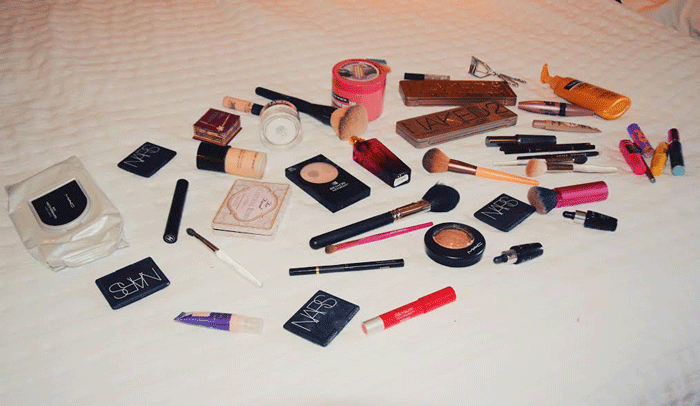[dropcap]I[/dropcap]nside the YouTube search bar lies an endless selection of videos ranging from movie reviews all the way to controversial challenges. Among these genres stands a constant that outstands any big-company advertisement: beauty vlogs. The number-one most watched beauty vlog is by Cassandra Bankson, a 25-year-old model, who gained more than 20 million views on a makeup tutorial for acne-prone skin meant to hide insecurities.
With this widespread content easily accessible, senior Abigail Hackney thinks social media is a big reason for why people of younger generations are incorporating makeup into their daily lives.
“Nowadays, everyone is on at least one social media platform, and makeup is constantly being talked about on all of them,” Hackney said. “I think some girls see it as a fun thing to experiment with when they see people they admire online wearing makeup, but I [also] think other girls start to wear makeup because they are insecure.”
Despite this assumption, Hackney said her own reason for using makeup isn’t from insecurity. Her incentive comes from the time she wakes up and the duration she has to get ready. Usually, Hackney just fills in her eyebrows and wears mascara, highlighter and concealer, but when she has more time, she opts for something extra such as eyeshadow or eyeliner. Though she is a bit insecure about the dark circles under her eyes, Hackney is comfortable with her face, so makeup is just a fun confidence boost.
While some girls turn to makeup to enhance their beauty, junior Olivia Sowers finds her confidence in clothing in order to feel more professional and increase her productivity. She also feels she gains a lot more respect from her parents, teachers when she looks put-together.
“[One time] I wore leggings, [and] I totally felt more tired all day, and I [didn’t] sit up straight, and [the outfit didn’t] motivate me throughout the day as it would if I dressed nice,” Sowers said. “People [also] respect you more, in my personal opinion, when you present yourself in a well-dressed manner, and I definitely feel that when I dress nice.”
With Audrey Hepburn as her idol, Sowers looks to decade fashion for inspiration and is a huge advocate of denim on denim and ‘80s style. Sowers is confident that she would rock the outfits of any decade thrown at her, she said. Despite her own tastes, however, Sowers also strives to make her parents proud by dressing skillfully, though she mainly does it to motivate herself.
[quote]“Dressing nice translates [to satisfy] my parents’ higher standards for me because it shows them I take myself seriously and am presenting myself neatly,” Sowers said. “They set the standards, and I strive to make them proud.”[/quote]
While Sowers’ influence comes mainly from her own likes and dislikes in clothing, Columbia Area Career Center marketing teacher John Fuenfhausen believes the change in beauty culture comes from advertising and the attitude of women in general. Dove’s “Real Beauty” campaign motivated women to see the allure they already had and not be self critical. In the campaign, which launched in 2013, Dove brought several different women for a portrait just based on the descriptions they gave of themselves, then descriptions other women gave of them. The descriptions the women gave of themselves were largely negative, while the descriptions about them were the opposite. This campaign was meant to empower women and reflected the marketing change based on this value.
“If you look back in the 1950s and track marketing and advertising over the last half century, you’ll see a definite change in how women are approached and depicted in marketing/advertising,” Fuenfhausen said. “Women are in the workforce taking top positions in major corporations. They’re seen as strong and [individuals] charting their own courses in careers and family life.”
Hackney agrees with this change in the persona of women. With advertisers such as Dove marketing to all women in order to break beauty standards, the push for female strength is becoming more mainstream. This is also prominent in Rihanna’s Fenty Beauty line, which contains 40 different shades of foundation for all women and the freedom to choose what one wears for any reason whether it’s internal or external.
“Regardless of what we do with ourselves, we’re all beautiful and equal,” Hackney said. “This world is sexist, racist and oftentimes difficult to women, so just do you. If people are going to disrespect you for your choices, [stick it to them] and continue being flawless.”
Do you look to social media for beauty inspiration? Let us know in the comments below.
Categories:
Too much too soon? Social media affects beauty trends
February 25, 2018
0
Tags:
More to Discover













































































